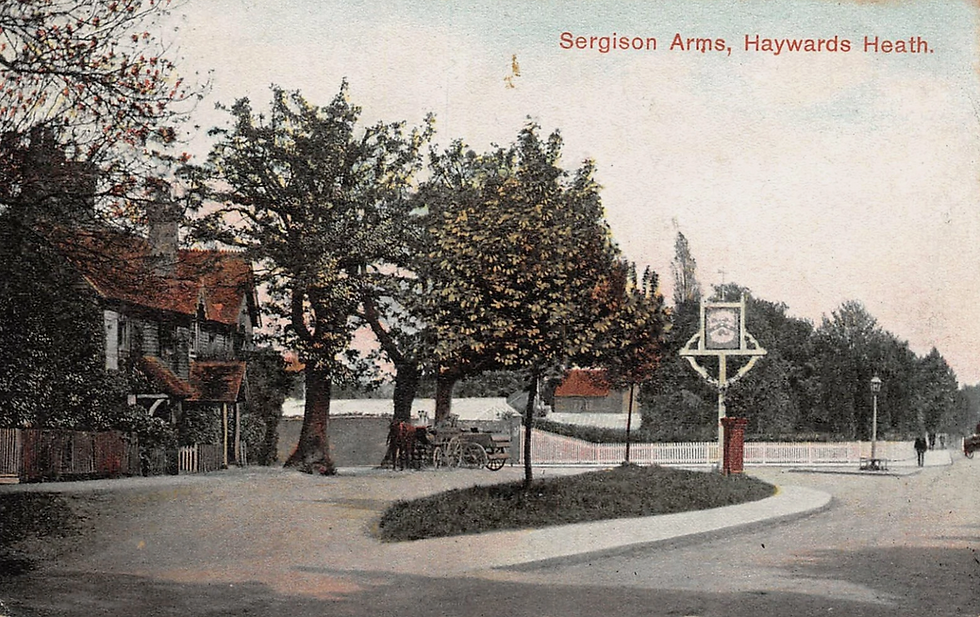1977: Maisie Wright addresses the myth that 'Haywards Heath has no history'
- andyrevell

- Aug 26
- 2 min read
Mid Sussex Times - Thursday 01 December 1977
‘People think Haywards Heath has no history’
Most people think that Haywards Heath has no history, said Colonel Hugh Harris, chairman of the Haywards Heath Amenities Society, when he welcomed Miss Maisie Wright, the well-known Cuckfield historian, to the Society's autumn lecture, and invited her to put the record straight.
Miss Wright accepted the challenge and gave an interesting and informative talk on the local area history. She was able to show a map dating back to 1638 (the original is in the Barbican museum at Lewes), on which the Manor at Great Haywards was mentioned, and went on to illustrate how the histories of Cuckfield in Haywards Heath had run a parallel course since records began about 20 years after the Domesday Book.
Cuckfield Church, ceded by monks of Lewes Priory in 1250, served as the parish church for Haywards Heath and it was not until the Enclosure act of 1861 that the two settlements began to go their separate ways.
There were tales of smuggling, and a skirmish near Butlers Green House during the Civil War. Miss Wright talked of the great days of the iron industry during the 15th and 16th centuries and described how the local ironmasters had built many of the substantial country houses still in existence, among them Cuckfield Park, Ockenden Manor and Slaugham Manor.
Muster Green was so called because a regular muster took place there. The Sheriff of the County – Giles Moore, of Horsted Keynes, mentioned in his diary the need to send a representative to the muster. Later on, there was a fair on the green, forerunner of the Dolphin fair, but this was mainly confined to the sale of pigs and haberdashery, two important commodities of the time. Disorderly scenes at the fair were recorded in the Sussex Weekly Advertiser in 1848. One John Brookes, a tramp, was charged with assaulting a policeman who refused him admittance to the Sergison Arms. Brookes hit the policeman three times in the leg.

At the end of the 18th century the Ouse Navigation Scheme marked the start, in this area, of the Industrial Revolution. The Ouse was made navigable from Newhaven to the Balcombe Viaduct where the remains of a wharf can still be seen. In a sense, the scheme was sounding its own death knell, since the bricks to transport the viaduct were transported by this means, and in 1841 the first railway link between London and Haywards Heath was opened by the London, Brighton and South Coast Railway. Originally, in 1837, it had been planned to link London with Cuckfield, but there was considerable opposition from local landowners, so Haywards Heath, and later Brighton, became the ultimate destination.
Thus began a new period of growth and prosperity, this time centred on the railway, which brought new population and business to the town.






Comments